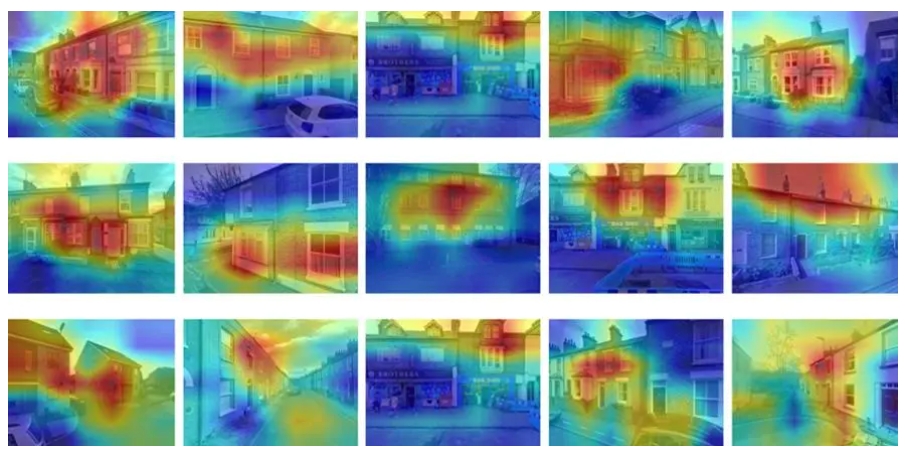AI trained to identify least green homes by Cambridge researchers
这类人工智能模型首先可用来帮助政策制定者有效地识别和优先考虑房屋改造和其他脱碳措施。
First of its kind AI-model can help policymakers efficiently identify and prioritize houses for retrofitting and other decarbonizing measures.
“难以脱碳”(HtD)房屋的碳排放量超过直接住房排放总量的四分之一,是实现净零排放的主要障碍,但却很少被发现或被针对性改善。
‘Hard-to-decarbonize’ (HtD) houses are responsible for over a quarter of all direct housing emissions – a major obstacle to achieving net zero – but are rarely identified or targeted for improvement.
目前,由剑桥大学建筑系的研究人员训练的一种新型“深度学习”模型有望更加简单快捷且低成本地识别这些高优先级问题房产,并制定策略来提高其绿色程度。
Now a new ‘deep learning’ model trained by researchers from Cambridge University’s Department of Architecture promises to make it far easier, faster and cheaper to identify these high priority problem properties and develop strategies to improve their green credentials.
由于各种各样的原因,包括房屋的年龄、结构、位置、社会经济障碍和数据可用性等,房屋可能“难以脱碳”。政策制定者倾向于主要关注通用建筑或特定的难以脱碳的技术,但发表在《可持续城市与社会》杂志上的这项研究或有助于改变这一状况。
Houses can be ‘hard to decarbonize’ for various reasons including their age, structure, location, social-economic barriers and availability of data. Policymakers have tended to focus mostly on generic buildings or specific hard-to-decarbonise technologies but the study, published in the journal Sustainable Cities and Society, could help to change this.

剑桥房屋街景图像,可识别建筑特征。红色代表对 "难以脱碳 "建筑识别贡献最大的区域。蓝色代表贡献较小。
Street view images of houses in Cambridge, UK, identifying building features. Red represents region contributing most to the 'Hard-to-decarbonize' identification. Blue represents low contribution.
城市研究员兼数据科学家Maoran Sun和他的博士导师、剑桥可持续设计小组负责人罗尼塔·巴德罕(Ronita Bardhan)博士,展示了其人工智能模型的HtD房屋分类精确度达90%,并且随着更多数据的添入,这一准确率有望继续提高,目前相关工作已在进行中。
Maoran Sun, an urban researcher and data scientist, and his PhD supervisor Dr Ronita Bardhan (Selwyn College), who leads Cambridge’s Sustainable Design Group, show that their AI model can classify HtD houses with 90% precision and expect this to rise as they add more data, work which is already underway.
Bardhan博士表示:“这是首次尝试使用开源数据训练人工智能识别难以脱碳的建筑。”
Dr Bardhan said: “This is the first time that AI has been trained to identify hard-to-decarbonize buildings using open source data to achieve this.
“政策制定者需要了解有多少房子需要脱碳,但他们往往缺乏资源去对每栋房屋进行详细审计。我们的模型可以提示他们哪些是高优先级房子,节省他们宝贵的时间和资源。”
“Policymakers need to know how many houses they have to decarbonize, but they often lack the resources to perform detail audits on every house. Our model can direct them to high priority houses, saving them precious time and resources.”
该模型还有助于当局了解HtD住房的地理分布,使其能够有效地定位和部署干预措施。
The model also helps authorities to understand the geographical distribution of HtD houses, enabling them to efficiently target and deploy interventions efficiently.
研究人员使用其家乡英国剑桥市的数据训练该人工智能模型。他们输入了来自能源绩效证书(EPCs)的数据,以及来自街景图像、鸟瞰图、地表温度和建筑库存的数据。该模型总共识别了700套HtD房屋和635套非HtD房屋。所有使用的数据都是开源的。
The researchers trained their AI model using data for their home city of Cambridge, in the United Kingdom. They fed in data from Energy Performance Certificates (EPCs) as well as data from street view images, aerial view images, land surface temperature and building stock. In total, their model identified 700 HtD houses and 635 non-HtD houses. All of the data used was open source.
Maoran Sun表示:“我们用有限的可用EPC数据来训练模型。现在,该模型可以在不需要任何EPC数据的情况下预测城市其他房屋。”
Maoran Sun said: “We trained our model using the limited EPC data which was available. Now the model can predict for the city’s other houses without the need for any EPC data.”
Bardhan补充道:“这些数据是免费提供的,我们的模型甚至可以在数据集非常零散的国家使用。该框架使用户能够输入多源数据集来识别HtD房屋。”
Bardhan added: “This data is available freely and our model can even be used in countries where datasets are very patchy. The framework enables users to feed in multi-source datasets for identification of HtD houses.”
Maoran Sun和Bardhan现在正在研究一个更先进的框架,该框架将带来与能源使用、贫困水平和建筑立面热图像等因素相关的额外数据层。他们希望这不仅能提高模型的准确性,还能提供更详细的信息。
Sun and Bardhan are now working on an even more advanced framework which will bring additional data layers relating to factors including energy use, poverty levels and thermal images of building facades. They expect this to increase the model’s accuracy but also to provide even more detailed information.
该模型已经能够识别建筑的特定部位,例如热量损失较多的屋顶和窗户,以及建筑物是新是旧。但研究人员相信,模型的细节和准确性还能被显著提高。
The model is already capable of identifying specific parts of buildings, such as roofs and windows, which are losing most heat, and whether a building is old or modern. But the researchers are confident they can significantly increase detail and accuracy.
他们已经在使用建筑物的热图像来训练基于英国其他城市的人工智能模型,并正在与一家空间产品组织合作,从新卫星提供的高分辨率热图像获取信息。Bardhan是NSIP-UK Space Agency项目的一员,她与剑桥大学天文学系和剑桥“净零”中心合作,使用高分辨率热红外太空望远镜来监测全球建筑物的能源效率。
They are already training AI models based on other UK cities using thermal images of buildings, and are collaborating with a space products-based organisation to benefit from higher resolution thermal images from new satellites. Bardhan has been part of the NSIP – UK Space Agency program where she collaborated with the Department of Astronomy and Cambridge Zero on using high resolution thermal infrared space telescopes for globally monitoring the energy efficiency of buildings.
Sun表示:“我们的模型将持续帮助居民和当局针对墙壁、窗户等特定的建筑特征进行改造干预。”
Sun said: “Our models will increasingly help residents and authorities to target retrofitting interventions to particular building features like walls, windows and other elements.”
Bardhan解释道,目前为止,脱碳政策的决定都是基于源自有限数据集的证据,但她对人工智能改变现状的能力持乐观态度。
Bardhan explains that, until now, decarbonization policy decisions have been based on evidence derived from limited datasets, but is optimistic about AI’s power to change this.
“我们现在可以处理更大的数据集。为了应对气候变化,我们需要基于该模型提供的证据制定适应战略。即使是非常简单的街景照片也可以在不危及任何人的情况下提供丰富的信息。”
“We can now deal with far larger datasets. Moving forward with climate change, we need adaptation strategies based on evidence of the kind provided by our model. Even very simple street view photographs can offer a wealth of information without putting anyone at risk.”
研究人员认为,让公众更容易看到和获取数据,也将更容易达成共识去实现净零排放。
The researchers argue that by making data more visible and accessible to the public, it will become much easier to build consensus around efforts to achieve net zero.
Bardhan说:“让人们拥有自己的数据,使他们更容易争取支持。”
“Empowering people with their own data makes it much easier for them to negotiate for support,” Bardhan said.
她补充说:“有很多人都在谈论需要利用专业技能来实现脱碳,但这些都是简单的数据集,我们可以打造可供当局和个人居民使用的用户友好型模型。”
She added: “There is a lot of talk about the need for specialised skills to achieve decarbonisation but these are simple data sets and we can make this model very user friendly and accessible for the authorities and individual residents.”
作为研究地点的剑桥市
Cambridge as a study site
剑桥虽是一个非典型的城市,但其信息丰富,因而成为最初模型的基础。Bardhan指出,剑桥相对富裕的经济水平意味着其有更大的意愿和经济能力去实现房屋脱碳。
Cambridge is an atypical city but informative site on which to base the initial model. Bardhan notes that Cambridge is relatively affluent meaning that there is a greater willingness and financial ability to decarbonise houses.
Bardhan表示:“从这个意义上说,剑桥的脱碳并非‘难以企及’。”“但这座城市的房屋存量相当老旧,而且建筑章程禁止在一些历史意义重大的房产中进行改造和使用现代材料。因此它面临着有趣的挑战。”
“Cambridge isn’t ‘hard to reach’ for decarbonisation in that sense,” Bardhan said. “But the city’s housing stock is quite old and building bylaws prevent retrofitting and the use of modern materials in some of the more historically important properties. So it faces interesting challenges.”
研究人员将与剑桥市议会讨论他们的研究发现。Bardhan曾与市政委员会合作,评估市政房屋的热损失。他们还将继续与剑桥大学“净零”中心和脱碳网络的同事合作。
The researchers will discuss their findings with Cambridge City Council. Bardhan previously worked with the Council to assess council houses for heat loss. They will also continue to work with colleagues at Cambridge Zero and the University’s Decarbonisation Network.

 中文
中文 English
English
